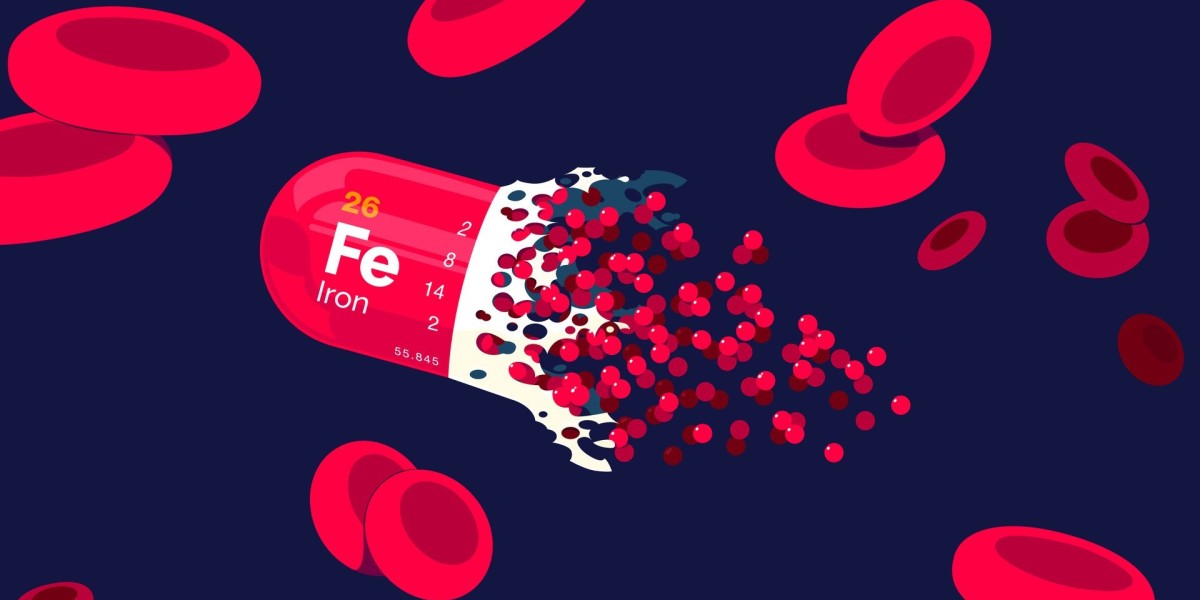Iron deficiency anemia develops when the body does not have enough iron to produce healthy red blood cells. Some common causes of iron deficiency anemia include blood loss, inadequate dietary iron intake, and malabsorption syndromes that prevent the body from properly absorbing iron from foods. Symptoms of iron deficiency anemia include fatigue, weakness, pale skin, shortness of breath, headache, dizziness, brittle nails, and heart palpitations. In severe cases, iron deficiency anemia can also cause changes in skin color, soreness of the tongue, Plummer-Vinson syndrome, and angular stomatitis.
Diagnosing Iron Deficiency Anemia
If a medical provider suspects a patient has iron deficiency anemia, they will conduct tests to confirm the diagnosis. A complete blood count (CBC) test measures levels of hemoglobin, red blood cells, hematocrit, MCV, MCH, and MCHC. Low levels of hemoglobin, hematocrit, MCV, MCH, and MCHC suggest the possibility of iron deficiency anemia. Additional tests include measuring serum ferritin levels and total iron-binding capacity. Low serum ferritin levels confirm lack of iron stores in the body. High total iron-binding capacity indicates increased levels of transferring attempting to bind available iron. In some cases, providers may also test for causes of iron loss like gastrointestinal bleeding.
Iron Deficiency Anemia Treatment with Dietary Changes
Increasing iron intake through diet is often the first Iron Deficiency Anemia Treatment approach recommended for mild to moderate iron deficiency anemia. Foods rich in heme iron, which is more readily absorbed by the body, include red meat, poultry, fish, and shellfish. Non-heme iron found in plant-based foods like beans, lentils, spinach, and dried fruits is not as well absorbed but can help boost iron levels when consumed along with a vitamin C source like citrus fruit. Consuming iron-rich foods along with foods high in vitamin C maximizes iron absorption. Limiting tea, coffee, calcium, and phytates during meals also aids iron absorption from plant foods. Following an iron-rich diet allows many cases of mild to moderate iron deficiency anemia to resolve without medication.
Iron Deficiency Anemia Treatment with Iron Supplements
For moderate to severe iron deficiency anemia or cases where anemia does not improve with dietary changes alone, oral iron supplementation becomes necessary. Common oral iron supplements include ferrous sulfate, ferrous fumarate, iron glycinate, and polysaccharide-iron complex. Ferrous sulfate is the least expensive form and contains the most elemental iron per dose but can cause more gastrointestinal side effects like constipation or nausea. Slower-release forms like ferrous fumarate and polysaccharide-iron complex are gentler on the stomach. Initial daily doses range from 65 mg for children to 325 mg for menstruating women. Lower doses divided across the day are usually better tolerated. Improvement of iron deficiency anemia typically requires at least 3 months of oral iron therapy. Blood tests monitor response to treatment and guide continuation or adjustment of iron supplement doses.
Iron Infusions for Resistant or Severe Iron Deficiency Anemia
When oral iron fails to adequately treat moderate to severe iron deficiency anemia or causes intolerable side effects, intravenous iron infusions provide a well-tolerated alternative. IV iron bypasses the gastrointestinal tract and allows administration of larger iron doses more rapidly. Various IV iron formulations differ in dosage, administration time, and side effect profile. Standard IV iron products include ferric carboxymaltose and iron sucrose. A single 1 gram dose of ferric carboxymaltose treats anemia as effectively as 6 months of oral iron. IV iron infusions boost hemoglobin and ferritin levels within 1-2 weeks while reducing need for blood transfusions. They pose risks of reactions like hypotension but allow repletion of iron stores within 1-3 infusions even in cases where oral iron therapy has failed or is not feasible.
Additional Lifestyle and Medical Therapy
Beyond dietary changes and iron supplement use, certain lifestyle modifications also aid treatment of iron deficiency anemia. Eating smaller, more frequent meals helps reduce gastrointestinal side effects from oral iron. Getting regular exercise tolerates increases iron demands from tissue building. Treating underlying causes ofiron loss or malabsorption also improves anemia recovery. In cases with ongoing bleeding, endoscopy evaluates source of blood loss requiring additional procedures. Adhering to follow-up blood tests monitors response to therapy. Additional medical treatment for anemia may include B12 injections, folate supplements, and addressing infections or inflammation worsening nutritional deficiencies. Surgical intervention sometimes repairs anomalies causing chronic blood loss or malabsorption. Combining lifestyle and medical care fully resolves iron deficiency anemia in majority of cases.
Get more insights on Iron Deficiency Anemia Treatment


